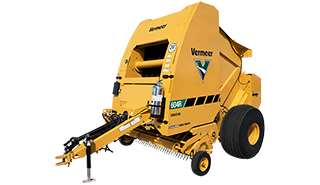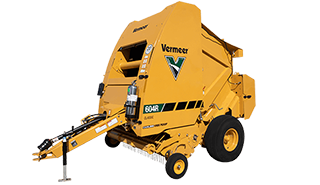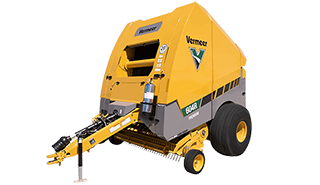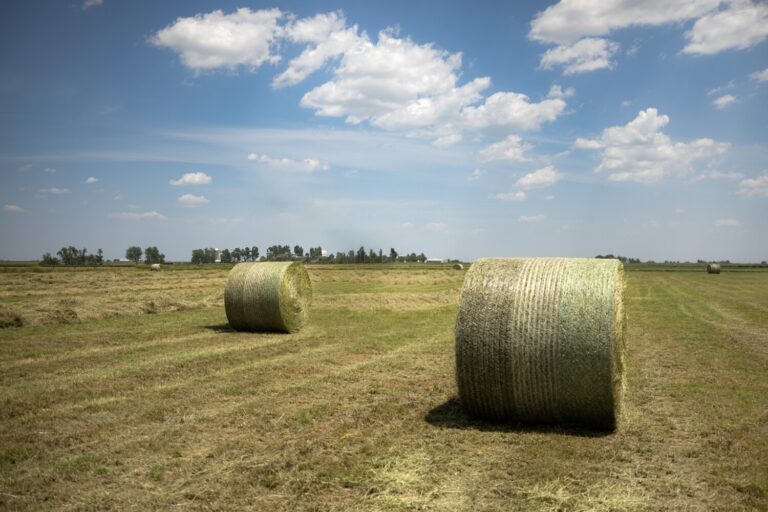
Marketing Hay Today
October 2024
Marketing hay isn’t a one-size-fits-all strategy. Even so, there can be common denominators across regional boundaries that help you make the most of your efforts. Just take some tips from someone who sells hay for a living.
Located in Lufkin, Texas, Will Maxey owns a hay and tack store serving customers seeking straw bales for everything from ranches with all classes of livestock to professional rodeo athletes to hayrides. According to Maxey, the store’s focus is to accommodate all customers with honesty and integrity — no matter what brings them through the door.
“Everybody’s important,” he said. “As long as we can meet the forage and nutritional needs of our customers, we feel like we’re doing a fairly good job.”
Tip one: Build a network
An uptick in hay sales starts with a quality product. For Maxey, that means sourcing hay from reputable hay producers. He sees immense value in fostering relationships with a wide range of producers, including those out of state. After all, hay production conditions can vary greatly from community to community and year to year.
A diverse sourcing strategy means Maxey can serve his customers no matter the local conditions. He consistently has high-quality hay from areas that experienced more timely rains and a higher yield.
“It just works really well,” he said. “We get a lot of hay moved to the places that it can really be utilized. It is very important to network and to have a good relationship with folks that are out of state or in different areas.”
Once he acquires the hay, the real strategy behind selling hay commences. To reach their customer base of seasoned farmers and ranchers, Maxey heavily relies on word-of-mouth. He’s taken the strategy online in recent years to reach younger customers.
“This younger generation, they have really turned to social media for recommendations and reviews,” Maxey said. “So, we’ve had to make a presence there and it’s been well received. You have to bend and adapt to your customer base.”
Tip two: Earn the business
Ultimately selling hay hinges on three things: price, customer service and honesty. Repeat customers keep businesses running, so Maxey and his team work hard to build a base of returning clients. The team goes above and beyond to take care of their customers’ specific situations. According to Maxey, when you do that — and act honestly — word travels fast.
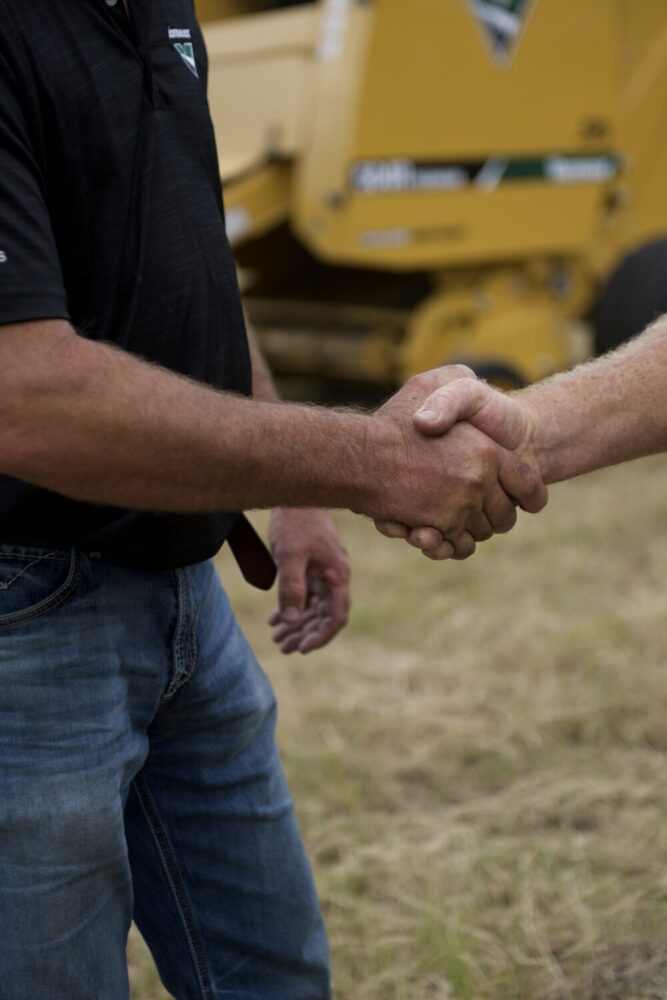
“Say what you mean and mean what you say,” he said. “That’s what brings those guys back. When you’re starting out, it’s so easy to get a bad name. You’ve got to do the right thing, and you’ve got to do it every time.”
According to Maxey, repeat customers also pay attention to whether pricing is fair. If someone feels like they’re getting ripped off, they likely won’t be back.
“We want to try to price our hay as affordable to the consumer as we can, and us still be able to hold a profit to keep the doors open,” he said.
Operating through this lens is how Maxey has landed customers willing to drive more than 50 miles one direction for their hay, and he works to keep those customers by coordinating trucks to their location. He has even gone so far as delivering hay to local customers who struggle to move hay themselves.
Tip three: Know your customer
Every operation is different, including the way they conduct business and respond to hay marketing. Maxey recommends hay sellers recognize those changes and work toward solutions.
“We can accommodate any customer,” he said. “We can take anything from the rancher who writes out his checks still to the guy who has Venmo. We did have to adapt a little bit to overcome that, but we want to be able to create opportunity in every instance.”
Payment method isn’t the only difference. There’s also a budget to consider. Sourcing quality hay and pricing it for a profit without exceeding customer budgets can be a tricky balance. Furthermore, not all producers require the highest quality hay. Ultimately, most want the best bang for their buck.
Tip four: Start small
The economic balancing act is a reality for hay producers, as well. Maxey said starting small is a sound approach as a producer learns the ins and outs of producing a quality product while also marketing hay. One way producers can do this is by seeking out used equipment.
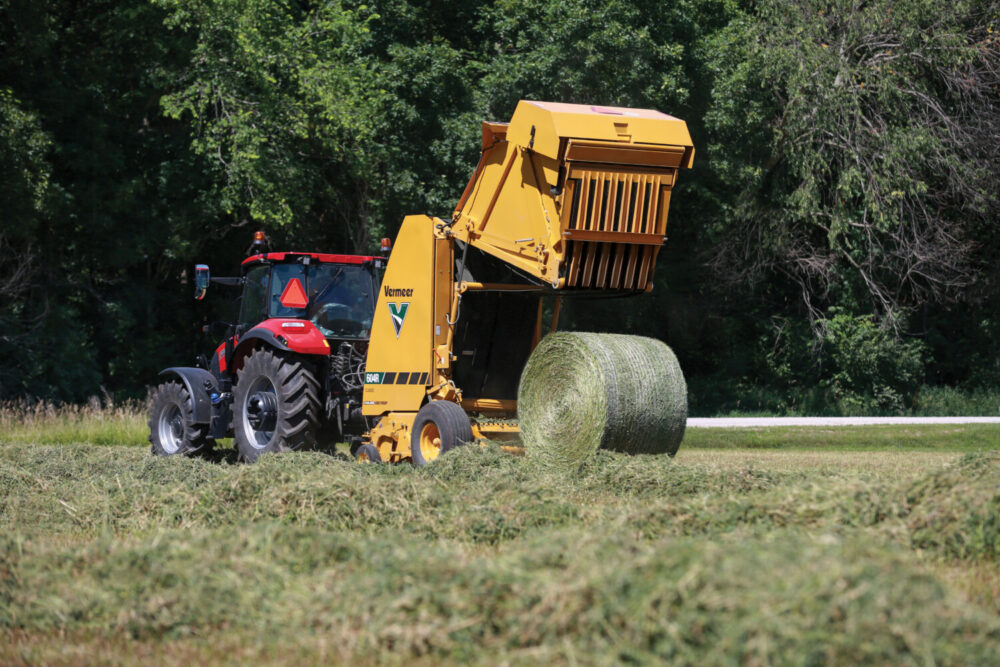
“Get your feet wet, and then start upgrading one piece at a time instead of buying all at one time,” Maxey said. “Because that’ll really give you a leg up if you’re only trying to fight one large note a year versus eight or 10.”
Starting slow allows a person to work through challenges and learn from those mistakes without becoming too overwhelmed. Seeking out veteran farmers in the area and equipment dealers willing to answer questions may also save a new producer a lot of grief. It is hard work to grow a business, but Maxey said it is one of the most fulfilling things he could do.
“Some of my best enjoyment comes from hard work and long days,” he said. “That doesn’t sound like what most people want, but when you get done with a good long day, and you turn around, and look back at what you’ve got accomplished, what you’ve got through that day, that makes everybody feel good.”
To find equipment that helps meet hay customer demand, contact your local Vermeer dealer today.
Vermeer, the Vermeer logo and the Black, White, Green bale wrap color scheme (Vermeer Net) are trademarks of Vermeer Manufacturing Company in the U.S. and/or other countries.
© 2024 Vermeer Corporation. All Rights Reserved.

